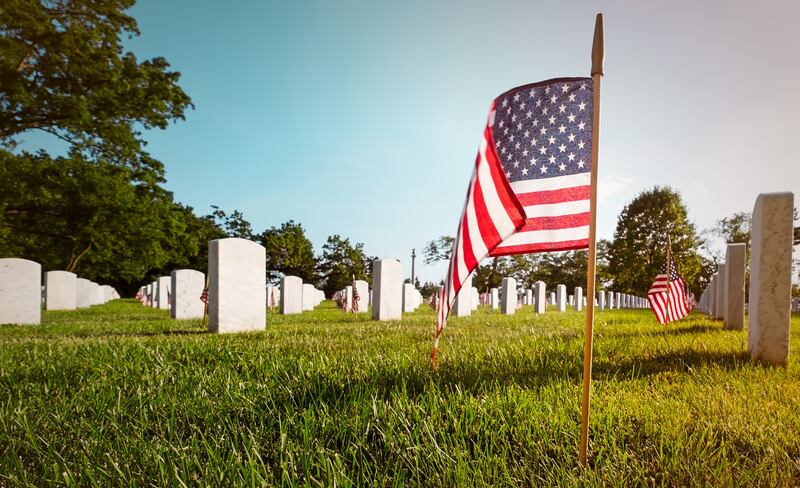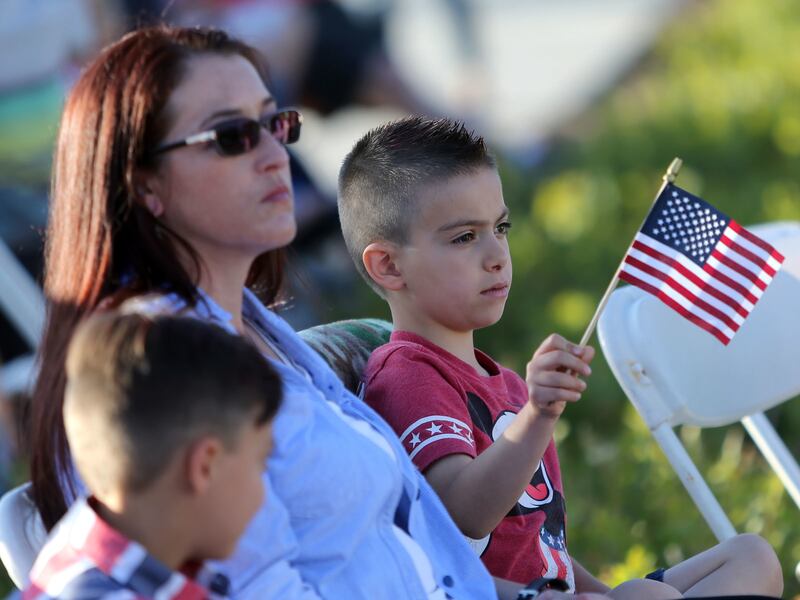This Memorial Day, Americans will commemorate the more than 1.1 million Americans who have been killed in battle.
Whether you're observing the holiday by visiting a cemetery, taking a road trip or in another way, here are 7 facts about veterans:
The veteran who started Decoration Day
Memorial Day began as Decoration Day.
Gen. John Alexander Logan was a Mexican-American War and Civil War veteran who headed the Grand Army of the Republic, a veterans’ organization for Union veterans.
In 1868, he established May 30 as Decoration Day — a day to decorate the graves of those who died during the Civil War. According to the Library of Congress, Logan got the idea from his wife, who saw Southern women in Virginia decorate soldiers’ graves.
Honoring Civil War veterans
Memorial Day was originally intended to honor specifically those who died in the Civil War, according to the Library of Congress. Congress recognized Memorial Day as a federal holiday in 1888 to give Civil War veterans the chance to honor their fallen comrades without losing pay, according to a Congress report on federal holidays.
After World War I, the holiday was revised to include all fallen soldiers.
The birthplace of Memorial Day
About 25 places claim to be the birthplace of Memorial Day, according to the Department of Veterans Affairs.
However, in 1966 President Lyndon B. Johnson and Congress named Waterloo, New York, as the holiday’s official birthplace. Residents there commemorated local Civil War veterans on May 5, 1866.
Confederate Memorial Day
Some Southern states also observe Confederate Memorial Day to specifically honor Confederate soldiers who died.
According to the Department of Veterans Affairs, Confederate Memorial Day falls on the last Monday in April in Mississippi, the fourth Monday in April in Alabama and April 26 in Georgia. North Carolina, South Carolina, Louisiana, Tennessee, Texas and Virginia also have holidays honoring Confederate soldiers.
The unknown soldiers
Every Memorial Day, the president or vice president lays a wreath at the Tomb of the Unknown Soldier in a ceremony at Arlington National Cemetery.
The white marble sarcophagus lies on top of the grave of the Unknown Soldier of World War I. Nearby are graves for unknown soldiers from World War II, the Korean War and the Vietnam War.
But the grave of the Vietnam War Unknown is now empty. On May 14, 1998, the remains that had been buried there for nearly 14 years were exhumed. Thanks to advances in DNA testing, the remains were identified as those of Air Force 1st Lt. Michael Joseph Blassie, according to the Arlington National Cemetery website.
In July 1998, Blassie was buried at Jefferson Barracks National Cemetery in St. Louis, Missouri, where his family lived.
A moment of remembrance for veterans
Congress established the National Moment of Remembrance in 2000, asking Americans to observe one minute of silence at 3 p.m. on Memorial Day “to remember and honor those who have died in service to the nation,” according to the Department of Veterans Affairs.
Veterans today
During World War II, more than 12 percent of Americans served in the military. Today, less than 0.5 percent of Americans have served in the armed forces.
Nearly half of veterans who served after 9/11 served with someone who was killed, according to a 2015 Pew Research Center study. And according to a 2011 survey, 84 percent of veterans who served after 9/11 believe the public doesn't understand the problems members of the military and their families face.





